Your Kids' Guide to Making Their Own Kites
Have you ever watched a kite soaring high in the sky and thought, "Wow, I want to do that!"? Well, guess what? You can! Making your own kite is not just a fun project; it’s an adventure that sparks creativity and gets you outdoors. In this guide, we’ll take you through every step of the kite-making process, from choosing the right materials to flying your masterpiece. So, grab your supplies and let’s get started on this exciting journey!
Before you can get your kite in the air, you need to gather some materials. Choosing the right ones is crucial for making a kite that’s not only fun to fly but also durable enough to withstand a little wind. Here are some materials that are safe and easy for kids to handle:
- Paper or Plastic: Lightweight materials work best for the kite's sail.
- Wooden Dowels or Bamboo Sticks: These will serve as the frame, providing structure.
- String: You’ll need strong, lightweight string to control your kite.
- Glue and Tape: Essential for holding everything together.
- Markers, Paints, or Stickers: To add your personal touch and make your kite unique!
Remember, the materials you choose can affect how well your kite flies, so pick wisely!
Did you know that different kite designs can impact how well they fly? It’s true! Some kites are built for speed, while others are designed for stability. Let’s dive into some popular kite shapes and their unique flying characteristics!
Traditional kites have a fascinating history and come in many unique designs. These kites are not just toys; they are a part of cultures around the world. By learning about classic styles, kids can recreate their own versions. Imagine flying a kite that looks like it was made centuries ago!
Diamond kites are perhaps the most recognizable shape. They are simple yet effective, making them perfect for beginners. To create your own diamond-shaped kite, start by cutting a diamond shape out of your chosen material, then attach it to a frame made of wooden dowels. This design is not only easy to make but also flies beautifully in the breeze!
If you're looking for a unique flying experience, box kites are the way to go! These kites have a 3D shape that allows them to catch the wind in a special way, making them stable and fun to fly. You can construct a box kite using cardboard or lightweight plastic, and the best part is that they can be larger than traditional kites, giving you a spectacular sight in the sky!
Now that you have the basics down, it’s time to get creative! Customization allows kids to express their individuality. Think about how you want your kite to look. You can paint it with bright colors, add your favorite stickers, or even draw designs that represent you. The sky is the limit when it comes to personalizing your kite!
Once you’ve gathered your materials and designed your kite, it’s time to put everything together. Here’s a step-by-step guide to ensure you assemble your kite safely and effectively:
Follow these simple steps to assemble your kite:
- Start by constructing the frame using your wooden dowels or bamboo sticks. Make sure they are securely attached with glue or tape.
- Next, attach your sail material to the frame. Ensure it is tight and smooth to help with aerodynamics.
- Finally, tie your string to the bottom of the frame. Make sure it is securely fastened so you can control your kite while flying.
And just like that, you have your very own kite ready to soar!
While making kites is super fun, safety is key! Here are some important safety measures to keep in mind:
- Always use scissors and glue under adult supervision.
- Make sure your kite is sturdy before flying it to avoid accidents.
- Choose open spaces away from trees, power lines, and busy roads to fly your kite.
With these tips in mind, you’re all set to enjoy a safe and fun kite-making experience!
Once your kites are made, it’s time to take them out for a spin! Here are some tips for selecting the perfect location and conditions for flying:
- Find an Open Area: Look for parks or fields where there are no obstacles.
- Check the Wind: A gentle breeze is ideal; too much wind can damage your kite.
- Fly with Friends: It’s always more fun to fly kites with buddies!
Now, go out there and let your creativity take flight!
Q1: What materials are best for making a kite?
A: Lightweight materials like paper, plastic, or thin fabric work best. For the frame, wooden dowels or bamboo sticks are ideal.
Q2: How do I know if my kite is ready to fly?
A: Ensure that the frame is sturdy and the sail is securely attached. Test the string to make sure it’s tied tightly.
Q3: What is the best weather for flying kites?
A: A sunny day with a gentle breeze is perfect. Avoid flying in stormy or very windy conditions.
Q4: Can I fly my kite alone?
A: Yes, you can fly your kite alone, but it's more fun with friends! Just make sure to fly in a safe area.

Choosing the Right Materials
When it comes to making your very own kite, choosing the right materials is like picking the perfect ingredients for a delicious cake! You want to ensure that everything is not only fun to work with but also safe and durable. So, let’s dive into the exciting world of kite-making materials!
First off, you’ll need a strong yet lightweight frame. Think of this as the skeleton of your kite—it needs to be sturdy enough to withstand the wind but light enough to soar high in the sky. Common materials for the frame include:
- Bamboo sticks: These are fantastic because they are both lightweight and strong. Plus, they give your kite a traditional feel!
- Plastic straws: Perfect for smaller kites and very easy to work with. They come in various colors too!
- Wooden dowels: If you’re looking for something a bit sturdier, wooden dowels can provide great support.
Next up is the material for the kite sail, which is the part that catches the wind and makes your kite fly. You want something that is both light and durable. Here are a few options:
- Plastic bag: Yes, you read that right! Old plastic bags can be repurposed into colorful kite sails. Just make sure they’re clean and intact!
- Lightweight fabric: If you have some old bed sheets or fabric scraps lying around, they can work wonders for your kite. Just ensure they’re not too heavy.
- Paper: Strong, lightweight paper can also be a great option. It’s easy to find and can be decorated however you like!
Now, let’s not forget about the string! This is the lifeline of your kite, connecting it to you and allowing you to control its flight. Look for:
- Strong nylon string: This type of string is durable and can handle the tension when your kite is soaring high.
- String from old spools: If you have any leftover string from previous projects, don’t throw it away! It can be perfect for your kite.
Lastly, you’ll want some adhesive materials to hold everything together. A good quality tape or glue will do the trick. Make sure to choose something that dries clear, so your kite looks neat and tidy!
In summary, when choosing materials for your kite, think about strength, weight, and safety. The right materials will not only ensure that your kite flies well but also make the process of building it a whole lot of fun. So gather your supplies, let your creativity flow, and get ready to watch your colorful creation dance in the sky!
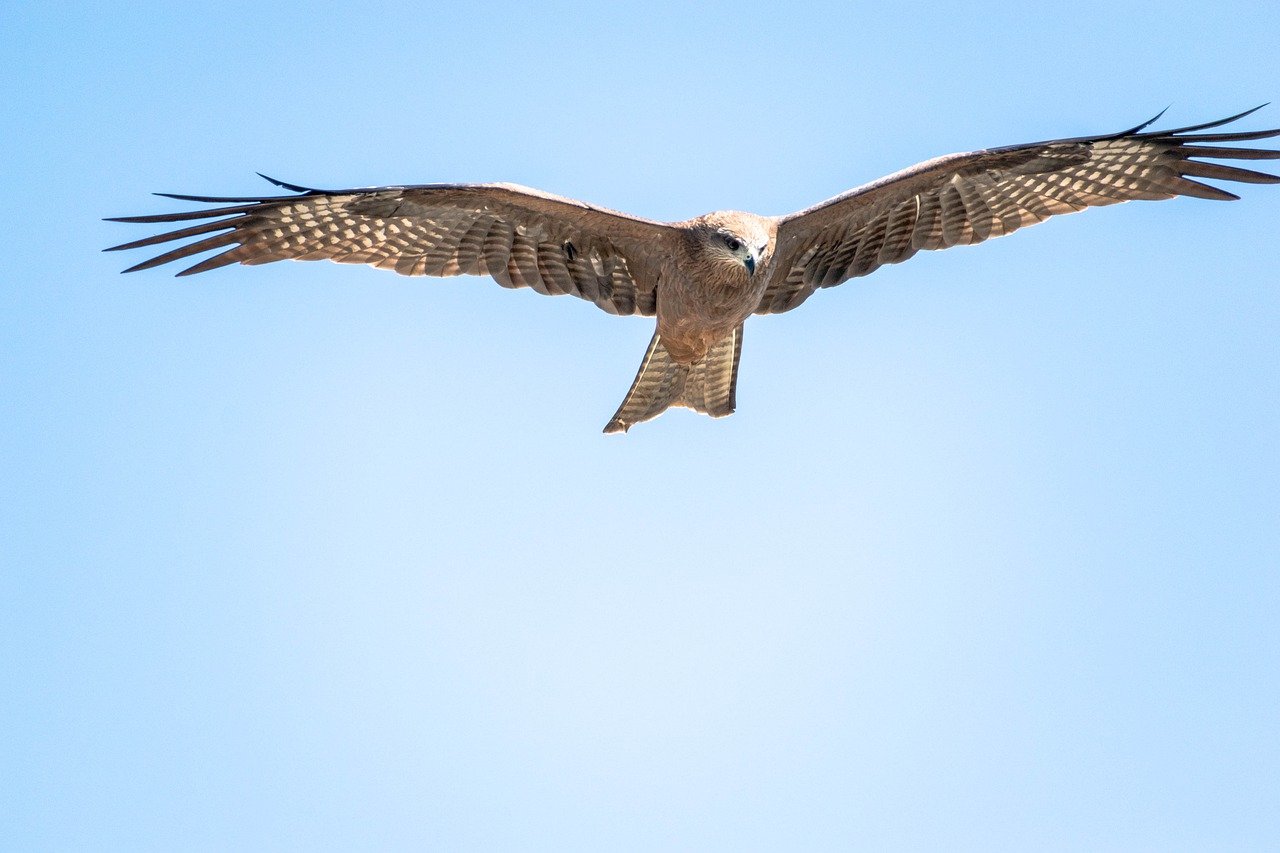
Understanding Kite Designs
When it comes to making kites, understanding kite designs is just as important as the materials you choose. Different designs not only look cool but also significantly affect how well your kite flies. Imagine a kite as a bird; its shape and structure determine how it glides through the air. So, let’s dive into the fascinating world of kite designs!
There are several popular kite shapes, each with unique characteristics that can enhance your flying experience. Some kites are designed for stability, while others are built for speed. Here are a few common designs you might find interesting:
- Diamond Kites: These are classic and very popular among kids. They have a simple geometric shape that makes them easy to fly and construct.
- Box Kites: With their three-dimensional structure, box kites can catch the wind in a unique way, allowing for impressive heights and stability.
- Delta Kites: Recognizable by their triangular shape, delta kites are great for flying in a wide range of wind conditions.
- Parafoil Kites: These are soft kites without a rigid frame. They can be incredibly colorful and can soar high, making them a favorite for many kite enthusiasts.
Now, you might wonder, what makes each design special? Well, it's all about aerodynamics! For instance, the diamond kite's shape allows it to cut through the air smoothly, while the box kite's structure creates a pocket of air that helps it stay aloft. Understanding these principles can help you choose the right design based on the wind conditions and your personal preferences.
Additionally, the size of the kite plays a crucial role in its performance. A larger kite can catch more wind, which is fantastic for flying in light breezes, while smaller kites are easier to control in stronger winds. Think of it like riding a bike: a bigger bike might be harder to maneuver, but it can go faster on straight paths. In contrast, a smaller bike is easier to handle but might not reach the same speeds.
Before you start crafting, it’s essential to consider what kind of flying experience you want. Do you want a kite that soars high in the sky or one that dances gracefully in lower winds? By understanding the different designs and their flying characteristics, you can make an informed choice that will lead to a more enjoyable kite-making and flying experience!
Q: What is the best material for making a kite?
A: Lightweight materials like plastic, paper, or fabric work best, combined with sturdy frames made of bamboo or lightweight wood.
Q: Can I customize my kite design?
A: Absolutely! Personalizing your kite with colors, patterns, and decorations is part of the fun and allows you to express your creativity.
Q: What wind conditions are best for flying kites?
A: A light breeze (about 5 to 15 mph) is ideal for most kites. However, always check the wind conditions before flying!
Q: How do I keep my kite from crashing?
A: Make sure to choose the right kite design for the wind conditions and practice flying in open spaces to avoid obstacles.

Traditional Kites
When we think of kites, it's hard not to imagine the colorful, fluttering shapes dancing in the sky. have a rich history that spans across cultures and continents, each with its own unique designs and stories. These kites are not just toys; they are a celebration of creativity and craftsmanship. Imagine the thrill of watching your very own creation soar high above, just like the kites that have been enjoyed for centuries!
One of the most fascinating aspects of traditional kites is their variety. From the simple diamond shape to the intricate designs of Asian kites, each type has its own charm and flying characteristics. For kids eager to dive into the world of kite-making, understanding these designs is essential. Not only does it allow them to recreate classic styles, but it also opens up a world of possibilities for innovation.
Let's explore some popular traditional kite designs that kids can try to recreate:
- Diamond Kites: These are perhaps the most recognizable kites, characterized by their simple, diamond shape. They are easy to make and fly well in a variety of wind conditions.
- Box Kites: With their 3D structure, box kites add a unique twist to kite flying. They are a bit more complex to build but offer an exciting flying experience.
- Stunt Kites: For the adventurous, stunt kites allow for tricks and maneuvers in the sky. They require a bit more skill but are incredibly rewarding once mastered.
As children embark on their kite-making journey, they can draw inspiration from these traditional designs. Not only does this process teach them about the art of kite-making, but it also encourages them to appreciate the cultural significance behind each kite type. For instance, in many Asian cultures, kites are flown during festivals and celebrations, symbolizing good luck and the arrival of spring.
Incorporating elements from these traditional kites into their own designs can be a fun challenge for kids. They might choose to use vibrant colors, unique patterns, or even add embellishments that reflect their personality. The sky is truly the limit when it comes to creativity!
In conclusion, traditional kites are more than just flying objects; they are a gateway to understanding history, culture, and the joy of creation. So, as kids prepare to make their own kites, let them explore the world of traditional designs and find inspiration in the stories that these beautiful creations carry with them.
Q: What materials do I need to make a traditional kite?
A: Common materials include lightweight paper or plastic for the sail, bamboo or flexible plastic for the frame, and string for flying. Always ensure that materials are safe and suitable for kids.
Q: How do I choose the right design for my kite?
A: Start with a simple design, like a diamond kite, if you're a beginner. As you gain confidence, you can experiment with more complex designs like box kites or stunt kites.
Q: Is it safe to fly kites in any location?
A: No, it's important to choose open areas away from power lines, trees, and busy roads. Parks or open fields are ideal for kite flying.
Q: Can I customize my kite?
A: Absolutely! Kids can use paints, markers, or stickers to personalize their kites, making them unique and special.
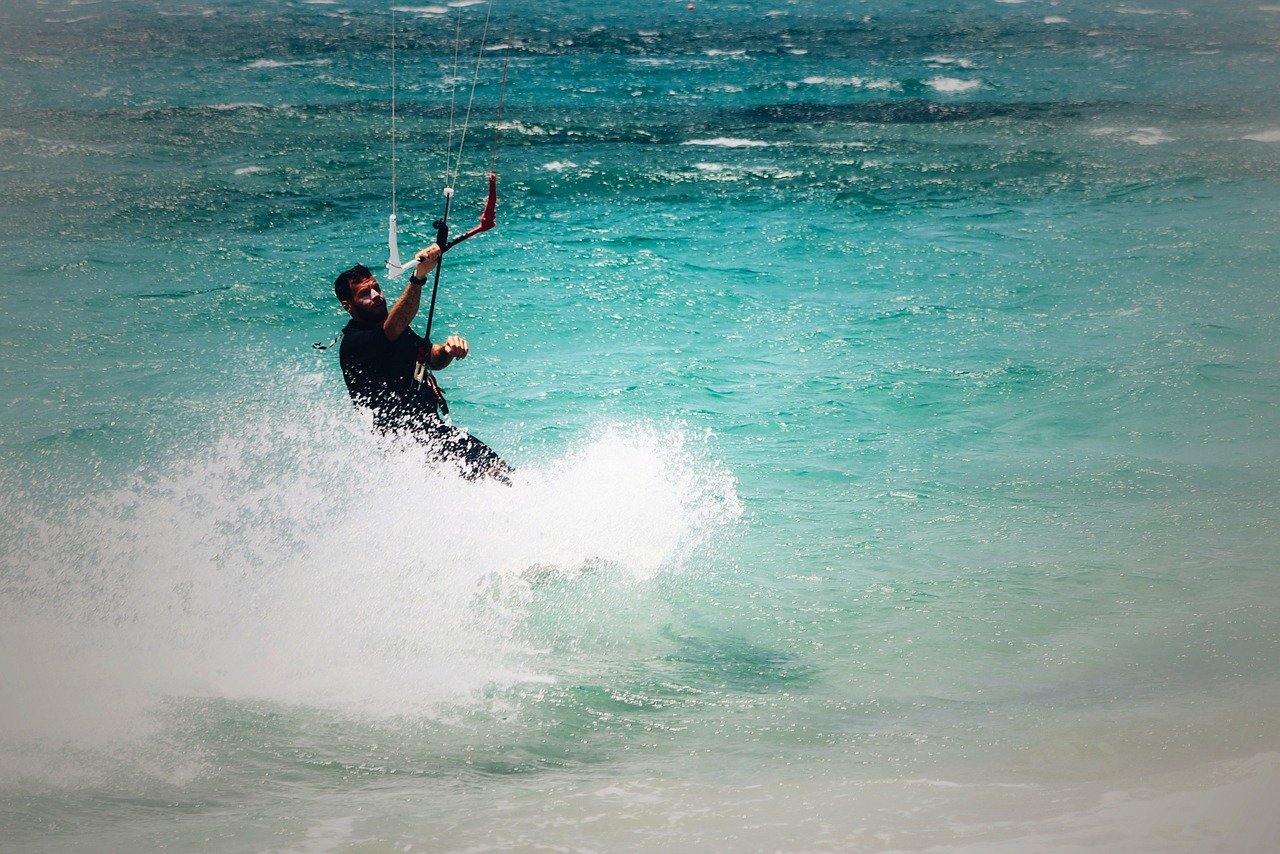
Diamond Kites
Diamond kites are not just a childhood favorite; they are a timeless classic that has been enjoyed by generations of kids and adults alike. These kites are easily recognizable due to their distinctive shape, resembling a diamond or a rhombus, which makes them not only fun to fly but also incredibly simple to create. Imagine the thrill of watching your very own diamond kite soar high into the sky, dancing with the wind like a colorful bird. It’s an experience that can spark joy and creativity in any child!
When making a diamond kite, the first step is to gather the right materials. You’ll need:
- A sturdy frame: This can be made from lightweight wooden dowels or bamboo skewers.
- Lightweight paper or plastic: Choose colorful paper or plastic sheets that can withstand a little breeze.
- String: A strong kite string is essential for controlling your kite while it's in the air.
- Glue and tape: These will help to secure the frame and attach the sail to the structure.
Once you have gathered your materials, it’s time to get creative! The design of a diamond kite is straightforward, making it an ideal project for kids. Start by cutting the paper or plastic into a diamond shape, ensuring it's large enough to catch the wind. The frame will consist of two dowels: one longer piece for the spine and a shorter piece for the crossbar. The crossbar should be placed about one-third of the way down the longer piece, creating a cross shape.
After constructing the frame, it's time to attach the sail. Lay the diamond-shaped paper over the frame and use glue or tape to secure it in place. Make sure to leave a little extra paper around the edges so you can fold it over the frame for a snug fit. This not only strengthens the kite but also gives it a neat appearance. Once everything is dry, attach the string to the bottom of the spine, and voilà! You have your very own diamond kite ready for takeoff!
But wait, it doesn't end there! This is where the real fun begins. Encourage kids to personalize their kites with unique designs, colors, and decorations. They can use markers, stickers, or even paint to make their diamond kite stand out in the sky. Let their imagination run wild—after all, a kite is an extension of their creativity!
In conclusion, making a diamond kite is not just about the final product; it’s about the entire experience of creating something from scratch. It teaches kids valuable skills such as planning, crafting, and even a bit of physics when they see how their kite flies. So grab those materials, unleash your creativity, and get ready to watch your diamond kite dance among the clouds!
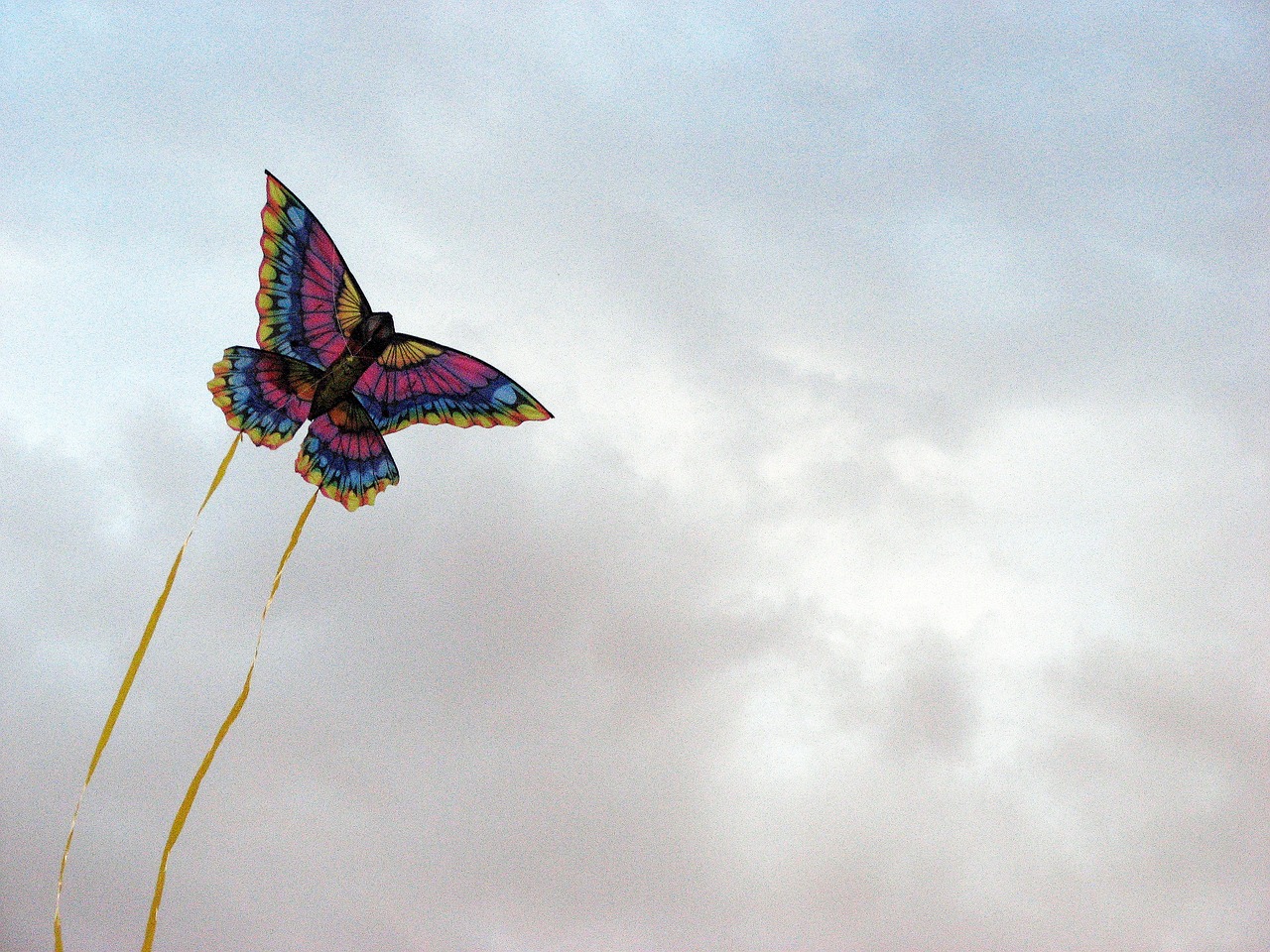
Box Kites
Box kites are not just any ordinary kites; they are a whole new level of fun and creativity! Imagine a kite that looks like a little flying box, soaring through the sky—how cool is that? These kites are unique because they have a three-dimensional structure, which allows them to catch the wind in a way that many flat kites simply can’t. This makes them not only visually appealing but also incredibly stable in the air. Kids, get ready to dive into the world of box kites, where your imagination can take flight!
To build your very own box kite, you'll need some basic materials. Don't worry; you don't need to be a rocket scientist to make one! Here’s a quick list of what you'll need:
- Lightweight cardboard or plastic - This will form the body of your kite.
- Wooden dowels or flexible straws - These will serve as the framework, giving your kite its shape.
- String - You’ll need this to fly your kite!
- Glue or tape - To hold everything together.
- Decorative materials - Think markers, stickers, or even paint to make your box kite truly yours!
Now, let’s talk about the construction process. First, you’ll want to create the sides of your box kite. Cut your cardboard or plastic into four equal squares or rectangles. These will be the walls of your kite. Next, take your wooden dowels or straws and cut them to the appropriate lengths to form the frame. You’ll need to connect the dowels in a cross shape to create a solid base. Once you have your frame ready, attach the walls securely using glue or tape. Make sure everything is tightly held together because you don’t want your masterpiece to fall apart while flying!
After you’ve assembled your box kite, it’s time to decorate! This is where you can really let your creativity shine. Use bright colors, fun patterns, or even your favorite characters to make your kite stand out in the sky. Remember, the more unique your design, the more fun it will be to see it flying high!
Finally, once your box kite is complete, it's time to take it out for a spin! Box kites are known for their ability to fly well even in lower wind conditions, so don’t worry if it’s not a super windy day. Just find an open space, hold the string tight, and watch your creation soar! It’s an exhilarating feeling to see something you made take to the skies. So, gather your friends, share your kites, and enjoy the outdoors!
Q: What are the benefits of flying box kites?
A: Box kites are great for developing coordination and understanding wind dynamics. Plus, they’re a fantastic way to enjoy the outdoors!
Q: Can I use recycled materials to make my box kite?
A: Absolutely! Using recycled materials not only helps the environment but also adds a personal touch to your kite.
Q: What wind conditions are best for flying box kites?
A: Box kites can fly well in light to moderate winds, making them perfect for a variety of outdoor conditions.
Q: How can I make my box kite more durable?
A: Reinforcing the corners and edges with extra tape or using stronger materials can help increase the durability of your box kite.

Creative Customizations
When it comes to making kites, the sky's the limit—literally! Customizing your kite is a fantastic way for kids to showcase their creativity and personality. Imagine flying a kite that not only soars high but also reflects who you are. Whether it’s a splash of color, unique designs, or fun decorations, your kite can become a canvas for self-expression. So, let’s dive into some exciting ways to make your kite truly one-of-a-kind!
First off, colors play a huge role in how a kite looks. Kids can choose their favorite colors or even themes. For example, if your child loves the ocean, they might want to use shades of blue and green to mimic the waves. Or, if they’re a fan of superheroes, they could use bold colors associated with their favorite character. The more vibrant the colors, the more eye-catching the kite will be as it dances in the sky!
Next, think about patterns. Kids can use markers, paints, or even stickers to create fun designs. Polka dots, stripes, or even hand-drawn images can add a personal touch. If you're feeling extra crafty, consider using fabric scraps or tissue paper to create layered effects. Just imagine a kite with a rainbow of colors flying against a clear blue sky—it’ll be a sight to behold!
For those who love a bit of texture, adding decorative elements can elevate the kite’s appearance. Kids can attach items like feathers, ribbons, or even small bells to the edges of the kite. Not only do these add visual interest, but they also create delightful sounds as the kite flies. Just think about how magical it would be to hear a gentle tinkling as your kite soars overhead!
Lastly, don’t forget about personal messages. Kids can write their names, inspirational quotes, or fun phrases on their kites. This not only makes the kite unique but also gives them a sense of ownership. It’s like carrying a little piece of their personality up into the sky!
In summary, the customization process is all about having fun and letting creativity flow. Encourage your kids to think outside the box and experiment with different materials and designs. After all, the goal is to create a kite that not only flies high but also tells a story about its creator. So grab those markers, fabrics, and decorations—let's make some skies a little brighter!
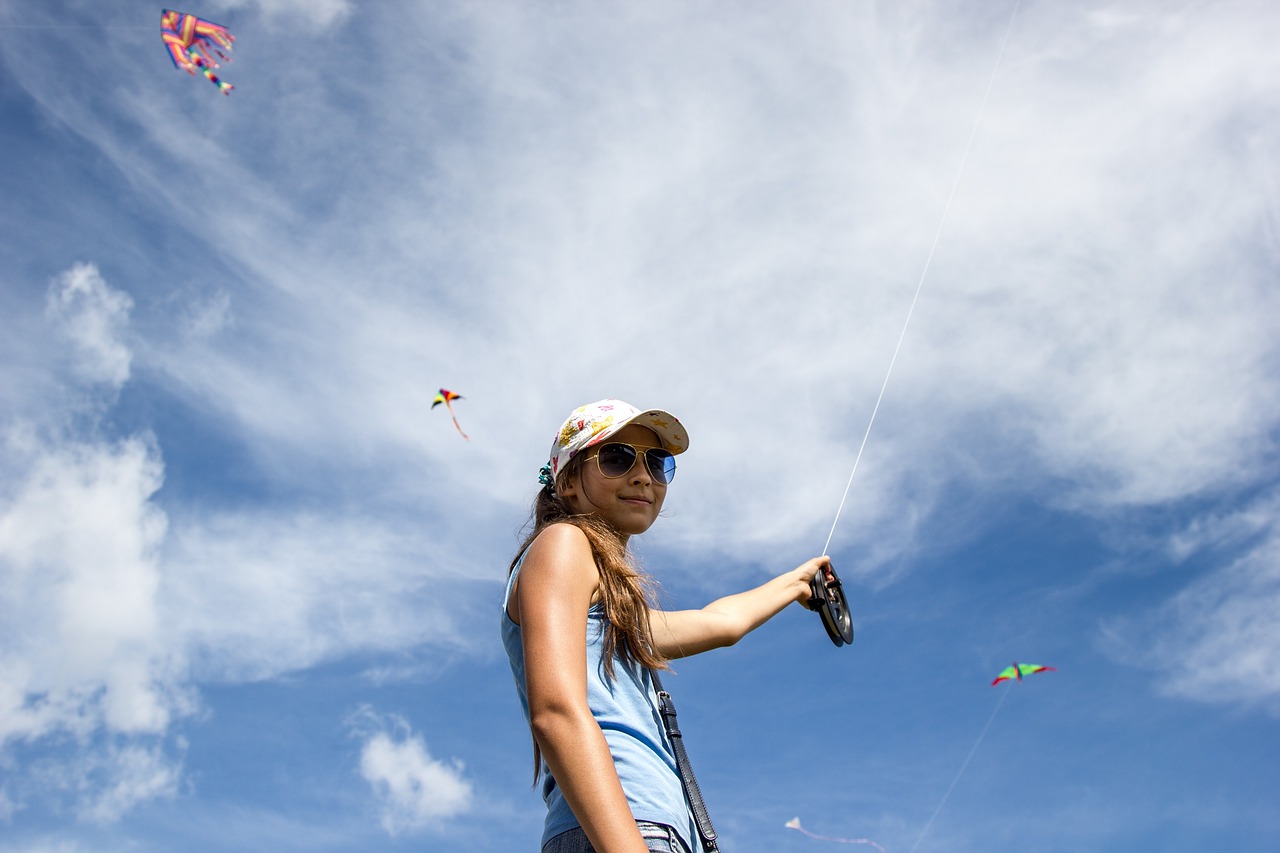
Assembly Instructions
When it comes to assembling your kite, having a clear plan is essential. Think of it like building a house; you wouldn’t want to start without a blueprint, right? So, let’s lay out our assembly instructions step-by-step to ensure your kite is not only fun to fly but also sturdy enough to withstand the wind. First, gather all your materials. You’ll need lightweight materials like paper, plastic, or fabric for the sail, and some wooden dowels or flexible straws for the frame. Don't forget tape, glue, or string for securing everything together!
Next, let’s break down the assembly process into manageable parts. Start by creating the frame of your kite. If you’re making a diamond kite, you’ll need two wooden dowels. Lay one dowel vertically and the other horizontally across it, forming a cross shape. Secure the intersection with tape or glue, making sure it’s tight enough to hold but not so tight that it breaks. For a box kite, you’ll need to create a more complex frame, which involves several dowels connected at various angles to create the box shape. This part might sound tricky, but just take it slow and follow your design.
Once your frame is complete, it’s time to attach the sail. Lay your frame flat on the ground and spread out your chosen material over it. Make sure to leave some extra material around the edges so that you can fold it over the frame. Use tape or glue to secure the sail to the frame, ensuring it’s tight but not stretched too far. This is where you can get creative! If you want to add some colorful designs or decorations, now is the perfect time to do so!
After attaching the sail, you’ll need to create a tail for your kite. The tail helps stabilize the kite while it’s flying. You can make a tail using a long strip of fabric or ribbon. Attach it to the bottom of your kite frame using tape or glue. Make sure it’s long enough to provide balance but not so long that it drags on the ground. Now, all that’s left is to attach the string. Tie one end of your string to the top of the frame and secure it well. This is your lifeline to the kite, so make sure it’s strong!
As you assemble your kite, remember to keep safety in mind. Use scissors carefully, and if you're using glue, make sure you don’t get it on your hands. If you’re working with younger kids, it’s a good idea to have an adult supervise during the assembly process. Once everything is put together, give your kite a gentle shake to ensure everything is secure. If it feels sturdy, congratulations! You’re ready for the next step: taking your kite out for a test flight!
- What materials are best for making kites? Lightweight materials like paper, plastic, or fabric work best for the sail, while wooden dowels or flexible straws are ideal for the frame.
- How do I ensure my kite flies well? Make sure your kite is balanced and has a tail for stability. The sail should be tight, and the frame should be sturdy.
- Can I decorate my kite? Absolutely! Feel free to use paint, markers, or other decorations to make your kite unique.
- What should I do if my kite doesn’t fly? Check for any loose parts, ensure the wind conditions are right, and make sure the string is securely attached.

Step-by-Step Guide
Creating your very own kite can be an exhilarating adventure, and it’s easier than you might think! Just imagine the thrill of seeing your colorful creation soar high in the sky, dancing with the wind. To help you on this journey, we’ve crafted a simple that will walk you through the entire process. Grab your materials, and let’s get started!
First, gather all your supplies. You’ll need:
- A large piece of lightweight paper or plastic for the kite's sail
- Two wooden dowels or flexible bamboo sticks for the frame
- String for flying your kite
- Glue or tape for securing the materials
- Scissors for cutting
- Markers, paint, or stickers to decorate your kite
Once you have your materials ready, it’s time to start constructing your kite. Follow these steps:
1. Cut Your Sail: Begin by cutting your paper or plastic into the desired shape. If you’re making a diamond kite, cut it into a diamond shape measuring about 30 inches by 40 inches. Remember, the larger the kite, the more impressive it will look in the sky!
2. Create the Frame: Take your two wooden dowels and form a cross. The longer dowel will be the spine of the kite, while the shorter one will create the crossbar. Use glue or tape to secure them together at the intersection. This frame will give your kite its structure, so make sure it’s sturdy!
3. Attach the Sail: Now, it’s time to attach your sail to the frame. Lay your frame on the back side of the sail and fold the edges over the frame. Use glue or tape to secure the sail to the frame. Make sure it’s tight; you don’t want your kite flapping around when it’s in the air!
4. Add the Bridle: The bridle is a crucial part of your kite that helps it fly smoothly. Cut a length of string and tie it to the top of the spine and the crossbar, creating a triangle shape. This will help balance the kite while it’s flying.
5. Decorate Your Kite: Here comes the fun part! Use your markers, paint, or stickers to decorate your kite. Let your imagination run wild! You can create patterns, draw your favorite characters, or even write a fun message. Remember, the more unique, the better!
6. Attach the Flying Line: Finally, tie one end of your string to the bridle. This will be your connection to the kite when it’s flying. Make sure the knot is secure, as you don’t want your kite to come crashing down mid-flight!
Now that you’ve assembled your kite, it’s time for the moment of truth—taking it out for a test flight! But before you do, let’s ensure you’re ready for the skies with some safety tips in the next section.
Q: What materials are best for making a kite?
A: Lightweight materials such as paper, plastic, or fabric work best for the kite's sail. For the frame, wooden dowels or flexible bamboo sticks are ideal.
Q: How do I ensure my kite flies well?
A: Make sure your kite is balanced by properly attaching the bridle and ensuring the sail is taut. Also, choose a location with plenty of open space and minimal obstructions.
Q: Can I fly my kite in any weather?
A: It's best to fly kites on clear, windy days. Avoid flying in stormy weather or high winds, as this can damage your kite and pose safety risks.

Safety Tips
When it comes to making kites, safety should always be your top priority. After all, the goal is to have fun while keeping everyone safe! Before diving into the exciting world of kite-making, here are some essential safety tips to keep in mind. First and foremost, always use materials that are child-friendly. Avoid sharp objects or heavy items that could cause injuries. Instead, opt for lightweight materials like plastic, paper, and bamboo sticks, which are easy to handle and less likely to cause harm.
Another crucial aspect of safety is to supervise kids during the construction process. This ensures that they are using tools and materials properly. If you have younger children, consider doing the more intricate tasks yourself while allowing them to help with the easier parts. For example, while they can easily decorate the kite or help with simple folding, you might want to handle cutting or assembling the frame.
Additionally, when it's time to fly the kite, choose a safe location. Look for open spaces away from trees, power lines, and busy roads. Flying kites in an area with ample room allows for a more enjoyable experience without the worry of entanglement or accidents. It's also important to check the weather conditions before heading out. Windy days are perfect for kite flying, but make sure it's not too windy, as strong gusts can lead to loss of control or damage to the kite.
To summarize, here are some key points to remember:
- Use safe, lightweight materials.
- Supervise children during construction.
- Choose open, safe locations for flying.
- Check weather conditions before flying.
By following these safety tips, you can ensure that your kite-making and flying experiences are not only fun but also safe for everyone involved. Remember, the joy of flying a kite should be accompanied by a sense of security and care!
Here are some common questions kids and parents might have about kite-making and flying:
- What materials are best for making a kite? Lightweight materials like plastic, paper, and bamboo are ideal for creating a sturdy yet safe kite.
- Can I fly my kite in any weather? It's best to fly kites on windy days, but avoid extremely windy or stormy conditions for safety.
- How can I decorate my kite? Use non-toxic paints, markers, or stickers to add a personal touch to your kite!
- What should I do if my kite gets stuck in a tree? If your kite gets stuck, don't try to climb the tree. Wait for it to come down on its own or ask an adult for help.
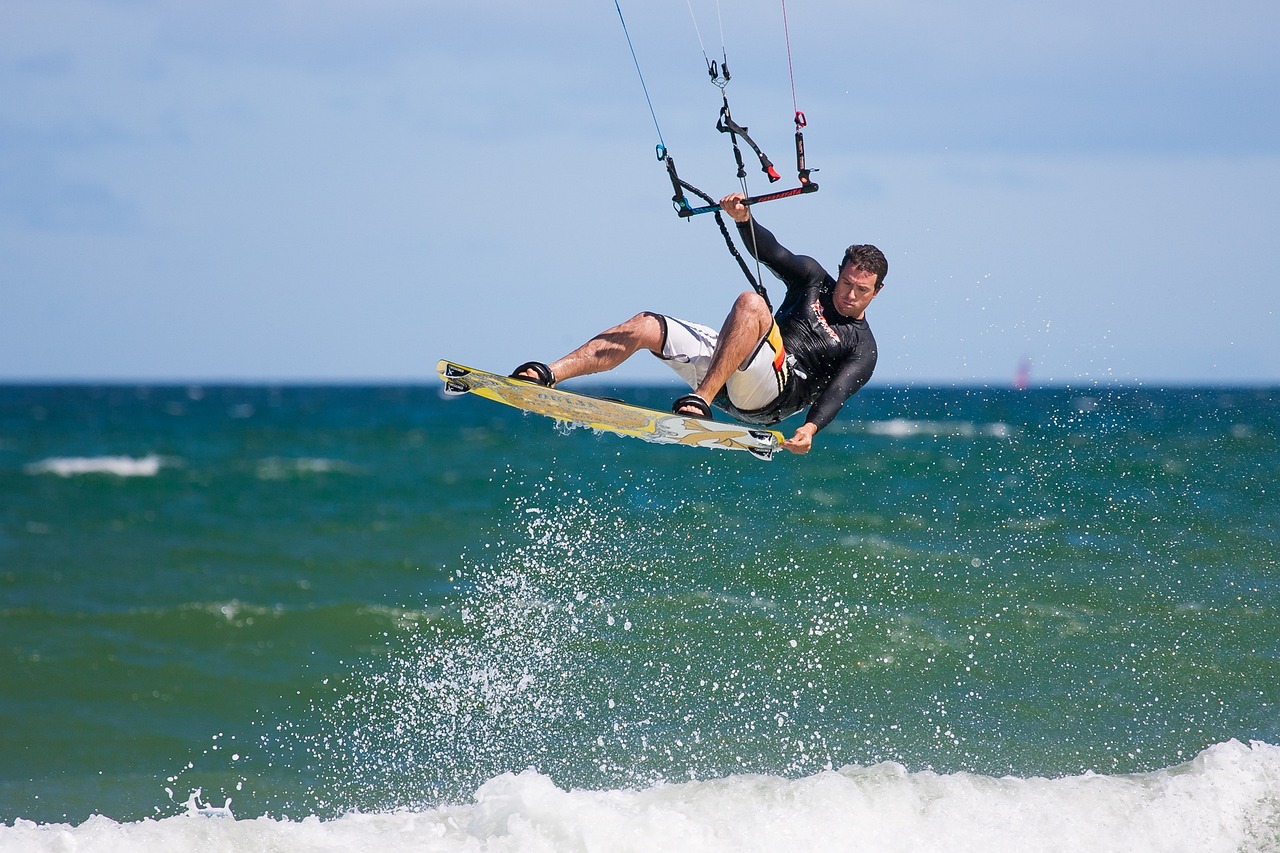
Taking Flight: Tips for Flying Kites
Once you've put in the effort to create your own stunning kite, the next exciting step is to see it soar through the sky! But before you rush outside, there are some important tips to consider that will help ensure your kite flies high and performs well. First and foremost, choosing the right location is crucial. Look for an open field or a large park where you won’t have to worry about trees, power lines, or other obstacles that could snag your precious creation. Imagine trying to ride a bike in a crowded room—definitely not the best setting for a smooth ride!
Another key factor is the weather conditions. Ideally, you want a day with a light breeze, around 5 to 15 miles per hour, which is perfect for kite flying. Too much wind can cause your kite to crash and burn—literally! So, keep an eye on the weather forecast. A clear, sunny day with gentle winds is like the perfect recipe for a fun day out. Plus, don’t forget to check the direction of the wind. Standing with the wind at your back gives your kite the best chance to take off gracefully.
When you’re ready to launch, here’s a little tip: hold the kite against the wind and let it catch the breeze. You can have a friend help you by holding the string while you let the kite go. Just like releasing a balloon, a little patience and teamwork can make all the difference. Once the kite is airborne, gently pull on the string to give it some altitude. It’s like giving your kite a little motivational pep talk!
As the kite flies higher, make sure to keep an eye on it. If it starts to dive or spin, you might need to adjust the tension on the string. Pulling it in a bit can help stabilize it, while letting out some string can give it more freedom to dance in the air. Think of it as guiding a dance partner; you want to keep the rhythm just right!
Finally, always remember to be considerate of others around you. If there are other kite flyers, make sure to give them space. It’s like sharing the playground—everyone deserves their chance to shine! And if you see someone struggling with their kite, offer to help. After all, kite flying is all about community and fun!
To wrap things up, let’s dive into some common questions that might pop up as you embark on your kite-flying adventure:
| Question | Answer |
|---|---|
| What materials do I need to make a kite? | You’ll need lightweight materials like plastic, paper, or fabric for the sail, and bamboo or flexible plastic for the frame. |
| Can I fly my kite in any weather? | It’s best to avoid flying kites in strong winds or storms. Look for calm, sunny days with light breezes. |
| How do I know if my kite is flying properly? | If your kite is stable and soaring without diving or spinning, it’s flying just right! |
| Is there an age limit for flying kites? | No! Kite flying can be enjoyed by people of all ages, but younger kids should have adult supervision. |
Frequently Asked Questions
- What materials do I need to make a kite?
To make a kite, you'll need some lightweight materials like paper or plastic for the sail, wooden dowels or flexible bamboo sticks for the frame, and string for flying. Don't forget some tape or glue to hold everything together!
- Can I customize my kite?
Absolutely! Customizing your kite is one of the best parts of the process. You can use markers, paints, stickers, or even fabric scraps to add your personal touch. Let your creativity soar!
- What are the best kite designs for beginners?
For beginners, diamond kites are a fantastic choice! They are simple to make and fly well in a variety of conditions. Box kites are also fun but may require a bit more skill. Start with a diamond kite and work your way up!
- How can I ensure my kite flies well?
To ensure your kite flies well, make sure it’s balanced and the sail is taut. Choose a good flying location with open space and minimal obstacles, like trees or buildings. Wind conditions are also important; a gentle breeze is ideal!
- What safety tips should I follow while making and flying my kite?
Safety is key! When making your kite, be careful with scissors and other sharp tools. While flying, avoid flying near power lines and always keep an eye on the wind direction. Make sure to have a buddy with you for extra safety!
- Can I fly my kite in any weather?
Not really! It's best to fly your kite on a clear day with a gentle breeze. Avoid flying in strong winds or storms, as this can damage your kite and pose safety risks. Always check the weather before heading out!
- How do I store my kite when I'm not using it?
To keep your kite in good shape, store it in a cool, dry place away from direct sunlight. You can hang it up or keep it flat in a box. Just make sure it’s not crumpled or bent to maintain its shape!



















